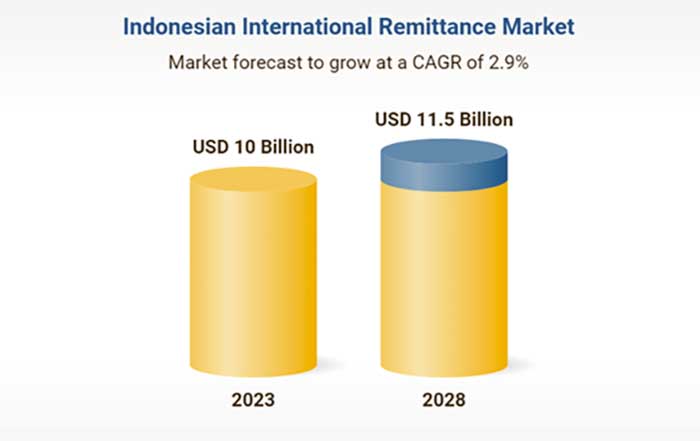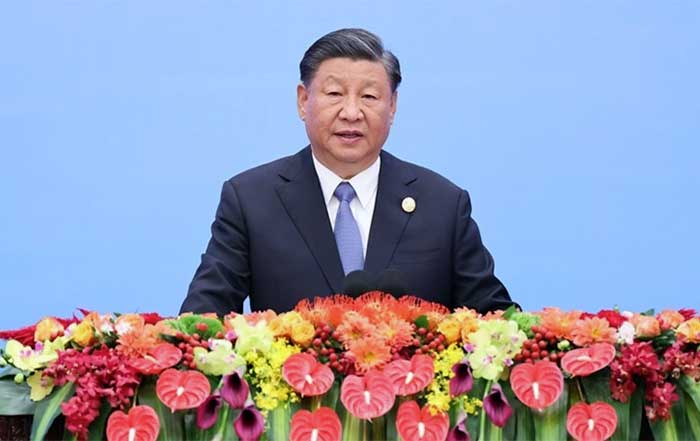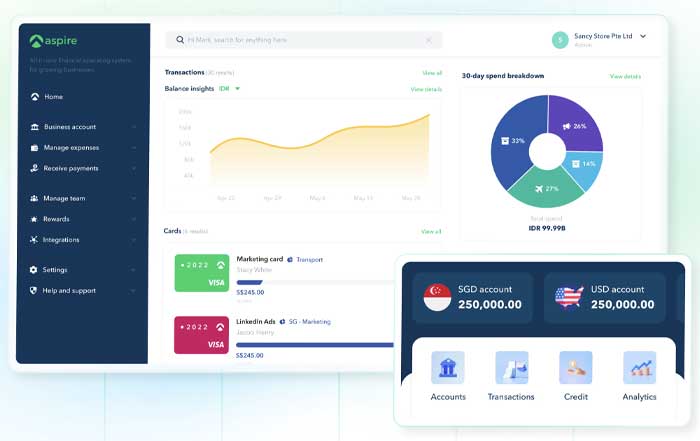In recent years, Turkey has emerged as one of the most dynamic and rapidly growing hubs for financial technology innovation. Positioned strategically between Europe and Asia, the country benefits from its youthful population, strong entrepreneurial spirit, and a rapidly expanding digital economy. With government reforms, increased venture capital interest, and a growing appetite for cashless transactions, the Turkish fintech sector has become a crucial driver of economic modernization. For readers of FinanceTechX, where technology, finance, and global markets converge, exploring the story of Turkey’s fintech evolution offers important insights into the transformation of emerging markets.
Economic and Demographic Foundations of Growth
Turkey’s fintech growth is deeply tied to its demographic and economic foundations. With a population exceeding 85 million, a median age under 33, and one of the highest smartphone penetration rates in the region, the country provides fertile ground for digital-first financial services. Young consumers are more likely to adopt mobile banking, peer-to-peer payment platforms, and blockchain-based solutions, creating significant demand for fintech services. According to World Bank data, Turkey’s GDP has grown steadily despite global challenges, and the rise of fintech has been central to enhancing financial inclusion, particularly among underbanked segments of society.
At the same time, economic volatility and currency fluctuations have encouraged Turkish consumers and businesses to seek more efficient, secure, and cost-effective alternatives to traditional banking. This has opened space for innovative startups and attracted established players to expand into the Turkish market. As the country continues its efforts to align with European Union financial standards, regulatory clarity has also made Turkey more attractive for international investors.
The Role of Regulation in Shaping the Market
A key element driving fintech in Turkey is the regulatory environment. The Banking Regulation and Supervision Agency (BDDK) and the Central Bank of the Republic of Turkey (CBRT) have implemented reforms that encourage digital transformation while safeguarding financial stability. In 2021, Turkey introduced its first comprehensive digital banking regulation, paving the way for neobanks to operate without physical branches. By 2025, several neobanks and digital-only financial institutions have established themselves as strong competitors to traditional banks.
The Financial Innovation and Technology Association (FINTR) has also played a critical role in creating a collaborative ecosystem that brings together regulators, banks, startups, and investors. Turkey’s approach reflects a balance between encouraging innovation and protecting consumers, a model that could be instructive for other emerging markets. Learn more about how fintech regulation is shaping business globally.
Payments and Digital Wallet Adoption
Turkey is one of the fastest adopters of digital payment systems in Europe and the Middle East. The pandemic accelerated the shift toward contactless and mobile payments, and this trend has only strengthened in the years that followed. Digital wallets such as Papara, ininal, and Paycell have become household names, with millions of users conducting daily transactions through these platforms. These companies offer services ranging from peer-to-peer transfers to bill payments and e-commerce integrations, effectively challenging the dominance of traditional banks.
According to data from Statista, Turkey is now among the top countries for contactless payment adoption. The growth of digital wallets has also fostered greater financial inclusion, enabling unbanked individuals to access payment services without the need for traditional accounts. For businesses, particularly small and medium enterprises, fintech solutions have provided affordable and scalable tools to manage payments, track expenses, and expand customer reach.
Turkey's Fintech Evolution Timeline
Interactive Journey of Financial Technology Growth
Digital Banking Regulation Introduced
Turkey introduces its first comprehensive digital banking regulation, paving the way for neobanks to operate without physical branches and establishing the regulatory foundation for fintech innovation.
Neobanking and Digital-First Services
The rise of neobanks in Turkey is reshaping the way financial services are delivered. Startups like Param and digital initiatives backed by larger institutions are introducing seamless mobile-first experiences, lower transaction costs, and tailored financial products. For consumers, neobanks represent a departure from long queues and complex bureaucracy, offering instead an intuitive and personalized banking journey. For younger generations, this digital-first approach aligns with their expectations for convenience, speed, and integration with everyday digital life.
At the same time, neobanks are playing a key role in serving underbanked communities. By reducing the barriers to entry, digital banking has become an enabler of economic participation for millions. As FinanceTechX’s business analysis highlights, the ability of fintech to scale quickly across different segments of the population is a powerful factor in Turkey’s economic modernization.
Venture Capital and Startup Ecosystem
One of the strongest indicators of Turkey’s fintech momentum is the influx of venture capital and private equity investment. Istanbul, already recognized as a global city bridging Europe and Asia, has become a magnet for both regional and international investors. In 2022, Turkey recorded a sharp increase in fintech funding, with startups raising hundreds of millions of dollars in growth capital. By 2025, this trend has matured into a more sustainable ecosystem, with established funds and accelerators backing early-stage startups as well as scaling ventures.
Global players such as 500 Startups, Revo Capital, and Earlybird Venture Capital have invested heavily in Turkey’s fintech innovators. Domestic investors and corporate venture arms of large banks have also contributed to strengthening the ecosystem. This infusion of capital has enabled Turkish startups to scale internationally, particularly in Europe, the Middle East, and North Africa. For more on how founders navigate global capital markets, see FinanceTechX’s founders hub.
Blockchain and Cryptocurrency in Turkey
One of the most dynamic components of Turkey’s fintech landscape is the rapid rise of blockchain and cryptocurrency adoption. Despite ongoing debates around regulation, Turkey ranks among the top countries in the world for cryptocurrency usage. Citizens have increasingly turned to digital assets as a hedge against inflation and currency volatility, with platforms such as Paribu, BtcTurk, and Bitci gaining millions of active users. These exchanges provide access not only to Bitcoin and Ethereum but also to a wide array of altcoins and tokenized assets, reflecting the growing sophistication of Turkey’s retail investor base.
The Turkish government has taken steps to regulate cryptocurrency transactions and integrate blockchain into the financial system. In 2021, the Central Bank of the Republic of Turkey (CBRT) banned crypto payments for goods and services, yet the subsequent years have seen more balanced regulatory approaches that recognize the need to embrace blockchain innovation while ensuring consumer protection. As of 2025, Turkey is piloting its digital lira, a central bank digital currency (CBDC) designed to modernize payment infrastructure and increase financial transparency. This initiative places Turkey alongside pioneering economies such as China and the European Union in the race to digitize sovereign currencies.
For international observers, the Turkish case highlights both the opportunities and challenges of integrating decentralized technologies into national economies. On one hand, crypto adoption has fostered a thriving ecosystem of exchanges, wallets, and decentralized finance platforms. On the other hand, questions about taxation, investor protection, and systemic risk remain. To stay updated on crypto developments, investors and businesses are increasingly looking to Turkey as a testing ground for digital asset strategies in emerging markets.
Artificial Intelligence and Fintech Innovation
Artificial intelligence has become an essential driver of fintech growth in Turkey. Startups and established financial institutions alike are leveraging machine learning, natural language processing, and predictive analytics to enhance customer experience and optimize operations. From AI-powered chatbots assisting with banking inquiries to fraud detection systems monitoring suspicious transactions in real-time, AI has become a cornerstone of Turkey’s digital financial services.
Companies such as Colendi, which started as a credit scoring startup, have expanded into AI-driven financial ecosystems that analyze consumer data to offer microloans, investment advice, and payment solutions. By enabling more accurate risk assessments, AI is helping lenders extend credit to individuals and small businesses previously excluded from formal financial systems. This is especially significant in Turkey, where SMEs account for the majority of employment but often face barriers to accessing traditional financing.
The integration of AI is also reshaping compliance and security. With increasing cyber threats targeting financial systems, Turkish fintech companies are deploying AI-based tools to strengthen cybersecurity and meet evolving regulatory standards. As explored in FinanceTechX’s AI insights, the ability of artificial intelligence to enhance both efficiency and trust is crucial for scaling fintech operations across borders.
Turkey’s Global Competitiveness in Fintech
Turkey’s fintech sector does not operate in isolation; it is deeply embedded within the global digital economy. Positioned at the crossroads of Europe, Asia, and the Middle East, Turkey serves as a natural hub for cross-border financial innovation. Turkish startups are expanding their services into regional markets, while international fintech companies view Turkey as a gateway to larger emerging economies.
The global competitiveness of Turkey’s fintech ecosystem is reinforced by its talented workforce, with thousands of engineers, developers, and entrepreneurs driving continuous innovation. Universities across Istanbul, Ankara, and Izmir are producing graduates with expertise in data science, blockchain development, and financial engineering, fueling the growth of the sector. In addition, Turkey’s relatively lower operating costs compared to Western Europe make it an attractive location for international firms to establish regional headquarters.
International organizations such as the OECD and the International Monetary Fund have highlighted Turkey’s digital finance initiatives as key enablers of economic resilience. For investors and corporate leaders, the ability to harness Turkey’s fintech ecosystem offers not only access to a large domestic market but also a springboard to global opportunities. More insights on world market strategies show that Turkey is strategically positioned to influence the future of digital finance far beyond its borders.
Sustainability and Green Fintech
Sustainability is increasingly central to Turkey’s fintech evolution. As climate change and environmental concerns dominate global business agendas, Turkish fintech companies are incorporating green finance principles into their products and services. Platforms are emerging that allow consumers to track the carbon footprint of their spending, invest in sustainable projects, and contribute to climate-conscious initiatives. This aligns with a broader movement toward green fintech, where technology is harnessed to drive environmental impact alongside financial returns.
Financial institutions in Turkey are also integrating sustainability into lending and investment decisions. For example, banks and digital platforms are offering green bonds and financing solutions targeted at renewable energy projects, sustainable agriculture, and eco-friendly infrastructure. By providing data-driven insights into environmental risk, fintech solutions are helping businesses align with the United Nations’ Sustainable Development Goals while meeting the demands of environmentally conscious consumers and investors.
International initiatives such as the United Nations Environment Programme Finance Initiative provide frameworks that Turkish companies are beginning to adopt. By aligning with global sustainability standards, Turkey’s fintech sector is positioning itself as a leader in responsible finance, ensuring that innovation supports not just economic growth but also environmental stewardship.
Jobs and Skills in Turkey’s Fintech Sector
The fintech revolution in Turkey is not only transforming financial services but also reshaping the job market. As new companies emerge and established banks digitize their operations, demand for specialized talent has surged. Roles in software engineering, data science, cybersecurity, blockchain development, and digital product management are among the fastest-growing career paths. According to workforce reports, thousands of new positions have been created in the sector over the past three years, and this trend is accelerating as Turkish fintech firms expand across borders.
Educational institutions and private training providers have stepped in to meet this demand by offering programs tailored to fintech competencies. Universities in Istanbul, Ankara, and Izmir have introduced dedicated courses in financial technologies, blockchain systems, and artificial intelligence, ensuring a pipeline of skilled graduates. Beyond formal education, Turkey has also seen a rise in coding bootcamps and fintech accelerators that equip professionals with practical skills. For readers exploring opportunities, FinanceTechX’s jobs portal provides insights into evolving roles within the sector and the types of expertise most valued by employers.
The shift in skills requirements reflects the broader digitalization of the economy. Professionals with backgrounds in banking or finance are increasingly expected to complement their knowledge with technical skills, while engineers and IT specialists must understand financial regulations and market dynamics. This convergence of disciplines illustrates how fintech is breaking down traditional boundaries between industries and creating hybrid career paths that did not exist just a decade ago.
Integration with the Stock Exchange and Capital Markets
Another crucial dimension of Turkey’s fintech transformation is its integration with the capital markets. The Borsa İstanbul, Turkey’s main stock exchange, has actively partnered with technology providers to enhance digital trading platforms and broaden access for retail investors. In parallel, fintech startups have developed apps and platforms that allow individuals to invest in equities, bonds, and exchange-traded funds with minimal entry barriers.
This democratization of investing has significant implications for Turkey’s economy. By enabling greater participation in the stock market, fintech platforms are fostering a culture of investment that goes beyond traditional savings accounts. Retail investors now have tools to manage portfolios, access real-time market data, and implement algorithmic trading strategies once reserved for professionals. This trend aligns with global developments where retail investors are playing a larger role in shaping financial markets.
Furthermore, Turkish fintech platforms are integrating with international exchanges, allowing domestic investors to access global assets and diversify their portfolios. This connectivity underscores Turkey’s ambition to position itself as a financial hub for both regional and global markets. For those seeking more context on stock exchange innovation, the Turkish example demonstrates how technology can modernize capital markets while strengthening investor confidence.
Challenges Facing the Sector
Despite its strong momentum, Turkey’s fintech industry faces several challenges that could shape its trajectory. Economic volatility remains a significant concern. High inflation rates, currency depreciation, and geopolitical risks can undermine investor confidence and create uncertainty for startups seeking long-term stability. While fintech provides solutions to mitigate some of these pressures, such as offering alternatives to traditional banking, broader macroeconomic conditions continue to influence growth prospects.
Another major challenge is cybersecurity. With digital adoption comes heightened vulnerability to cyberattacks, phishing schemes, and data breaches. Turkish fintech firms must continuously invest in advanced security infrastructure and comply with evolving regulations to protect users and maintain trust. The role of artificial intelligence in security is becoming indispensable, yet the threat landscape remains dynamic.
Regulatory uncertainty around cryptocurrencies and decentralized finance also poses hurdles. While Turkey has made progress in drafting clearer frameworks, investors and entrepreneurs often call for more consistency to foster innovation without compromising stability. Striking the right balance between oversight and flexibility will be critical for ensuring that Turkey’s fintech sector continues to thrive.
Lastly, competition from both domestic and international players intensifies the pressure on startups to scale quickly and differentiate their offerings. With large global fintech firms eyeing the Turkish market, local innovators must leverage their deep cultural understanding and adaptability to retain a competitive edge.
Future Outlook: Turkey as a Global Fintech Leader
Looking ahead, the future of Turkey’s fintech sector appears both promising and transformative. By 2030, Turkey is expected to be among the top emerging markets shaping the global financial technology landscape. Several factors support this trajectory: a young, tech-savvy population; robust digital infrastructure; regulatory frameworks that increasingly encourage innovation; and sustained investor interest.
Turkey’s ambition to launch a fully functional digital lira could revolutionize domestic payments while also setting a precedent for other emerging economies. Blockchain integration in supply chain finance, smart contracts, and cross-border payments is poised to enhance transparency and efficiency, potentially positioning Turkey as a regional leader in digital asset innovation. In parallel, the rise of green fintech solutions underscores the country’s commitment to aligning financial growth with sustainability goals.
The convergence of AI, blockchain, and open banking standards will further accelerate the industry’s development, enabling Turkish fintech firms to compete on a global scale. Collaboration with European, Asian, and Middle Eastern partners will also strengthen Turkey’s role as a bridge in international finance. For global business leaders and investors tracking world economic trends, Turkey’s fintech story offers both inspiration and practical lessons in navigating technological disruption.
Ultimately, Turkey’s fintech sector demonstrates the power of innovation to transform financial systems in emerging markets. By fostering inclusion, enhancing security, and driving sustainable growth, fintech has become a cornerstone of Turkey’s economic modernization. As 2025 unfolds, the country’s trajectory highlights not just local progress but a global shift in how financial technologies shape the future of commerce, investment, and everyday life. Explore more on FinanceTechX to understand how fintech continues to redefine the intersection of finance and technology worldwide.










